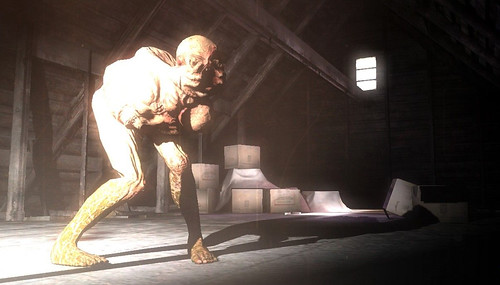The cyberspace was created by some dreams who embodied themselves in the technic.
At the beginning of the cyberspace, some dreams that were to be embodied in the art. Vannevar Bush, J. C. R Licklider, Doug Engelbart, Tim Berners-Lee ... cyberspace is made of the very same texture of their dremas. If there is navel of the cyberspace, it is in the recesses of few individuals psyches. The miracle is that this space unfold from some individual desires, and found its path through and by a tangle of machins, institutions, ideologies... There is between desires and cyberspace in its beginning some common points. Both have the same fragility, theses flickering before things become possible. Both have the same need to be recognized. Both have this kind of hardness in front the requirements of development
Dreams are not just products of our mental functioning in their most intimate. As they dive deep into the intersubjective space (Kaes, R., La polyphonie du rêve). The dream has two umbilicus. The first is the intrapsychic lifeand the second leads to the common and shared psychic spaces. This openness to other psyche that makes some dreams can become reality in social space.
Other dreamers, as Ted Nelson did not see upload their dreams into reality. Perhaps because they may not have enough links to the intersubjective space?
Vannevar Bush's dream
Consider a future device for individual use, which is a sort of mechanized private file and library. It needs a name, and, to coin one at random, "memex" will do. A memex is a device in which an individual stores all his books, records, and communications, and which is mechanized so that it may be consulted with exceeding speed and flexibility. It is an enlarged intimate supplement to his memory.Vannevar Bush
Doug Engelbart's dream
Many years ago I dreamed that people were talking seriously about the potential of harnessing a technological and social nervous system to improve the collective IQ of our various organizations. What if suddenly, in an evolutionary sense, we evolved a super new nervous system to upgrade our collective social organisms?
Then I dreamed that we got strategic and began to form cooperative alliances of organizations, employing advanced net-worked computer tools and methods to develop and apply new collective knowledge. Call these alliances Networked Improvement Communities (NICs). The new technologies could enable more effective distributed collaboration, and the potential forshared risk and multiplied bene? ts seemed promising. In the dream, the solution involves giving high priority to the collective capability for a distributed community or organization to develop, integrate, and apply new knowledge. Wealready had this capability, organizations handle new collective problems all the time. But in the dream we become much more effective at it.
In the dream, this collaborative capability was called CoDIAK, for Concurrent Development, Integration, and Application of Knowledge. Doug Engelbart
J.C.R. Licklider & Robert Taylor's dream
In a few years, men will be able to communicate more effectively through a machine than face to face. J.C.R. Licklider & Robert Taylor. Science and Technology, April 1968.
Tim Berners-Lee's dream
I have a dream for the Web . . . and it has two parts.
In the first part, the Web becomes a much more powerful means for collaboration between people. I have always imagined the information space as something to which everyone has immediate and intuitive access, and not just to browse, but to create. [...] Furthermore, the dream of people-to-people communication through shared knowledge must be possible for groups of all sizes, interacting electronically with as much ease as they do now in person.
In the second part of the dream, collaborations extend to computers. Machines become capable of analyzing all the data on the Web - the content, links, and transactions between people and computers. A "Semantic Web," which should make this possible, has yet to emerge, but when it does, the day-to-day mechanisms of trade, bureaucracy, and our daily lives will be handled by machines talking to machines, leaving humans to provide the inspiration and inuition. The intelligent "agents" people have touted for ages will finally materialize. This machine-understandable Web will come about through the implementation of a series of technical advancements and social agreements that are now beginning. Tim Berners-Lee, Weaving the Web




